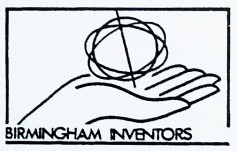Patent Searches
PATENT SEARCHING
All searches, even those conducted by the Patent Office themselves, can fail to find some of the prior art. There are many reasons for this, a patent can be wrongly classified, some patents may still be in their first 18 month period, which is confidential, or an invention may be in an entirely different field from those searched. For example, you may have an invention connected with radio control of a model boat but the prior art which anticipates your invention could be in the field of garage door operators or radio burglar alarms and a search would not necessarily find it. Experienced searchers do anticipate these complications of course but in the end the areas to search can be very subjective.
You can have a go at searching for yourself and if you want to know how then read on. But never make the mistake of thinking that any search can be absolute!
SEARCHING YOURSELF
Most DIY searches are done using “key words”. Key word searches are unreliable and only find some of the relevant prior art, but some is better than nothing so if you want to have a go then get on to the Internet and go to: http://ep.espacenet.com, You will now be in an introduction screen and you should click on:
“Quick Search”. This will open up the general search screen with three search fields.
Field number 1 is “Database” it will already be set at “worldwide” and is best left at that.
Field number 2 is “Words or persons” it will already be set at “words” and should be left at that
Field number 3 is “Search terms” and here you can enter your “key word” then click on search and the search engine will return all results which have that word in the title or the abstract.
The search engine will only display the first 500 results and you may have to narrow down your search if there are more than 500 results.
Try entering two words and if that does not reduce the results then try entering three words. Put spaces between the words and if that does not reduce the results to a manageable number, then you will need to learn a little more about key word searching before proceeding further.
The search engine responds to what are known as “Boolean” operators. These are functional logic instructions which can be used with key words, for example the terms AND or OR or NOT which are usually entered in capital letters. When you entered two or three words, the search engine automatically put AND between each word for you when it searched.
Let’s use an example – let us say that you are searching for a new design of deck chair let’s say it does not fold. If you enter “chair” the number of results would be over 45000 so to narrow the results you have entered the two words “chair deck” but your results are still around 500 and you want to narrow some more. You can enter “(chair AND deck) NOT folding” and you will eliminate folding deck chairs from the results leaving 300 to look at. Note, the brackets are important and the search engine can treat “fold” and “folding” differently.
The Espacenet system has a help section which carries a better explanation of the use of various Boolean operators and if you want to be adventurous you can click on ‘help’ and learn how you make your key words more effective.
A word of caution however – remember - successful searching is a skilled task and professionals do not rely on “Key Word” searches. You can get some very interesting results from these simple key word search techniques but never rely purely on key word search results to make decisions about your invention.
Wishing you the best of luck and successful searching. Regards ----- W John Aston.
Editor’s note: Remember, by spending time looking, you learn a great deal about the competition in your area of invention, but for solid reassurance, John will carry out a thoroughly professional job at competitive rates.
To ask him: Tel – 01384 279 560 Mobile – 07957 563 953 Email – patents@johnaston.com
or use LinkedIn message to John Aston

